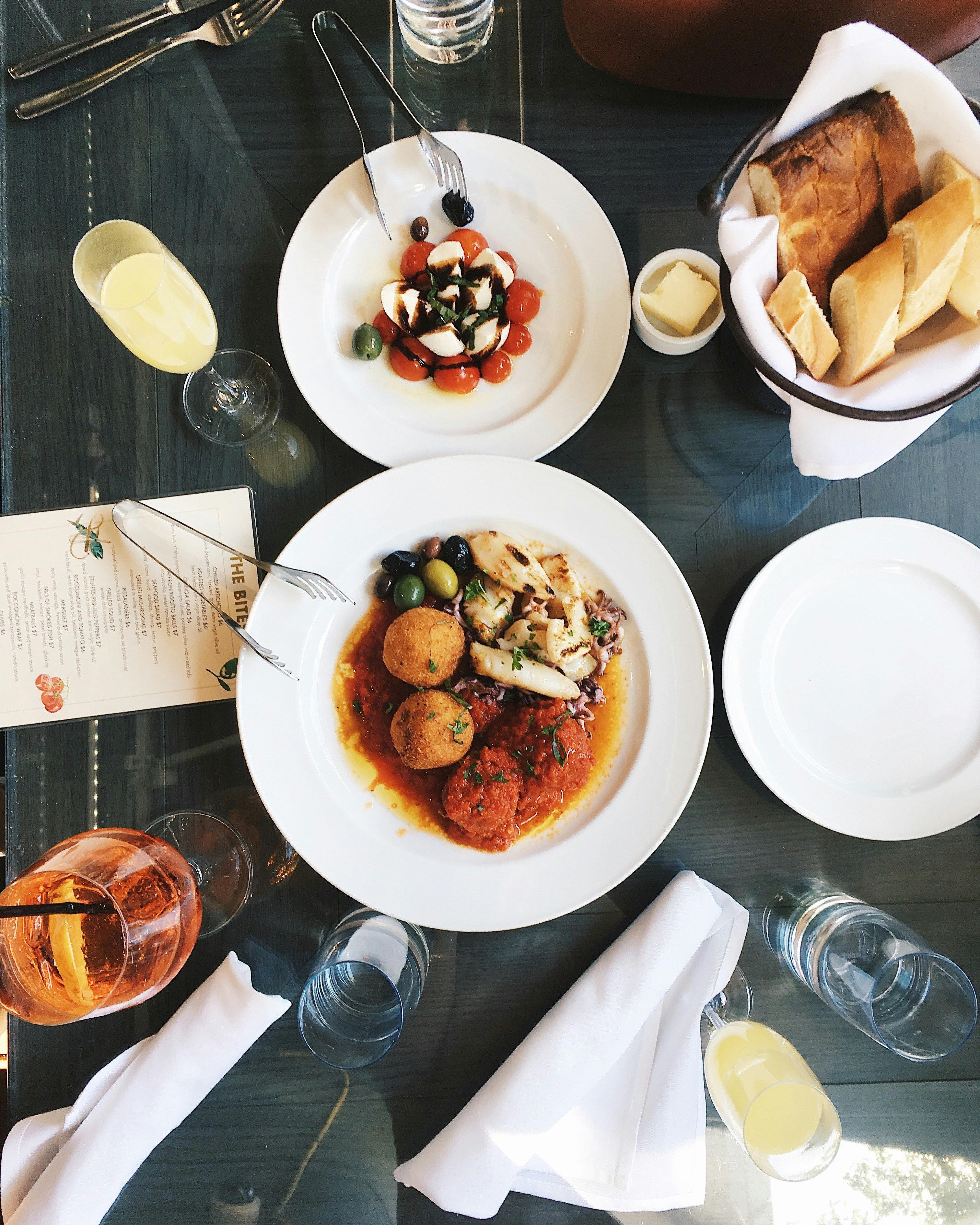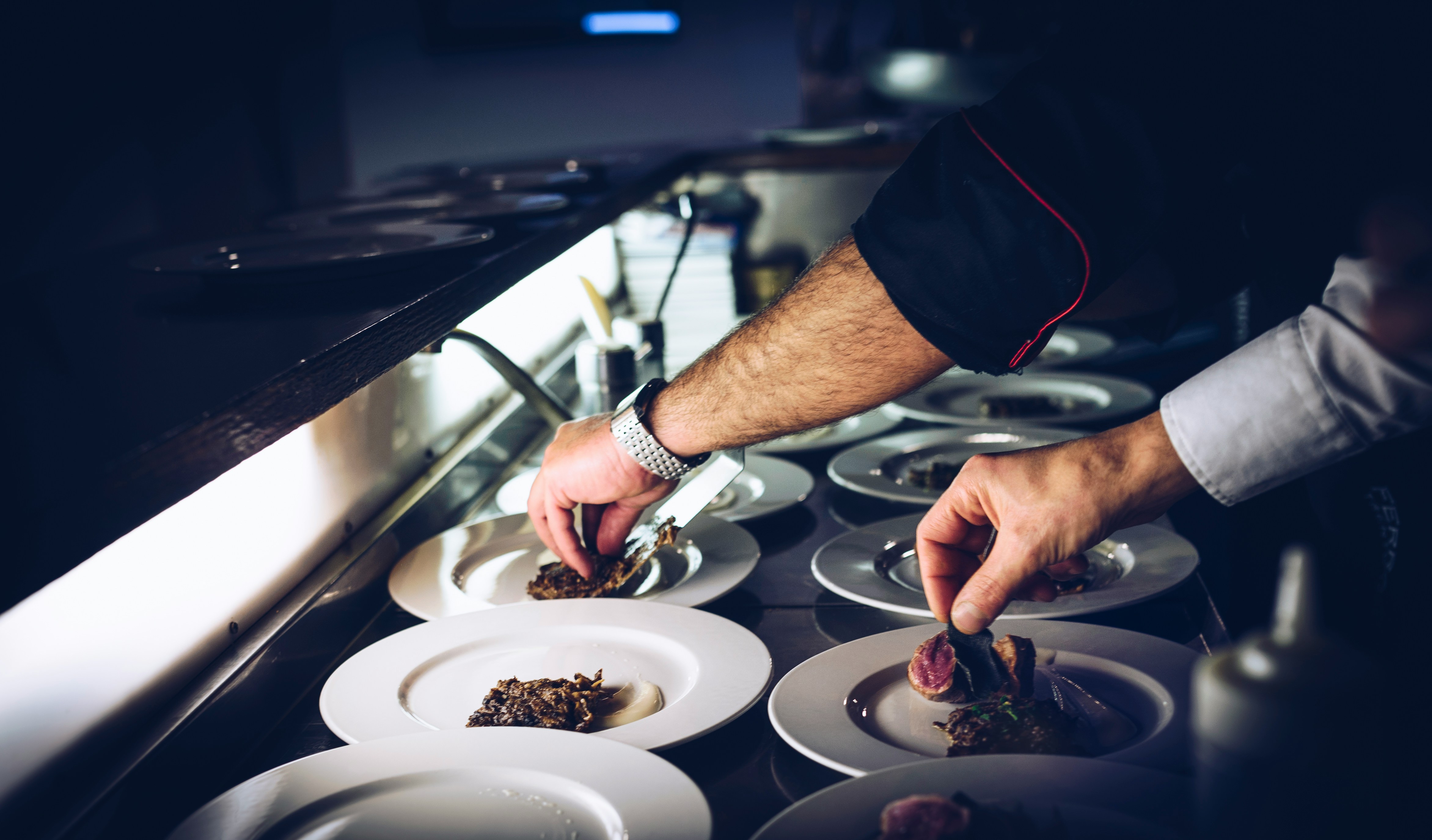7 Proven Strategies for Restaurant Financial Management
Running a restaurant involves more than just creating delicious dishes and providing excellent service.
It also requires effective financial management.
Without a solid grasp of your restaurant's finances, you risk running into cash flow issues, overspending, and ultimately, business failure.
But how do you navigate the complex world of restaurant financial management?
How do you ensure your restaurant is profitable, while still delivering value to your customers?
In this guide, we'll explore seven proven strategies for restaurant financial management.
We'll delve into the importance of financial analysis, cost control, budgeting, cash flow management, and more.
We'll provide practical tips for improving your restaurant's financial health and profitability.
Whether you're a seasoned restaurant owner or just starting out, this guide will equip you with the knowledge and tools you need to effectively manage your restaurant's finances.
From understanding your profit margins to implementing best practices in restaurant accounting, we've got you covered.
So, let's dive in and start building a financially sustainable and successful restaurant business.
Stay tuned as we unravel the secrets of successful restaurant financial management.
1. Mastering Financial Analysis for Strategic Decision-Making
Financial analysis is the backbone of effective restaurant financial management.
It involves examining your financial data to understand your restaurant's performance.
This analysis can reveal insights about your profitability, cost efficiency, and financial stability.
It can help you identify areas for improvement and make informed decisions about your restaurant's operations and strategy.
For instance, by analyzing your sales data, you can identify which menu items are most profitable and which ones are underperforming.
This information can guide your menu planning and pricing strategies.
Similarly, by analyzing your expense data, you can identify areas where you may be overspending and find ways to cut costs.
Financial analysis is not a one-time task, but an ongoing process.
It should be part of your regular financial management routine.

by Dan Gold (https://unsplash.com/@danielcgold)"
Understanding Your Profit Margins
Profit margins are a key indicator of your restaurant's financial health.
They show how much profit you make for each dollar of sales, after accounting for all costs.
Understanding your profit margins can help you determine whether your pricing is adequate and whether your costs are under control.
There are two main types of profit margins to consider: gross profit margin and net profit margin.
Gross profit margin is the percentage of sales revenue that remains after subtracting the cost of goods sold (COGS), which includes the cost of ingredients and direct labor.
Net profit margin, on the other hand, is the percentage of sales revenue that remains after subtracting all operating expenses, including overheads and taxes.
Both margins are important and should be monitored regularly.
Conducting Regular Financial Audits
Financial audits are a crucial part of restaurant financial management.
They involve a thorough review of your financial records to ensure accuracy and compliance with accounting standards and regulations.
Regular audits can help you identify errors or discrepancies in your financial data, which could indicate problems such as fraud or mismanagement.
They can also help you identify opportunities for cost savings or efficiency improvements.
Here are some key steps to conduct a financial audit in your restaurant:
- Review your sales records to ensure all transactions are accurately recorded and accounted for.
- Check your expense records for any unusual or unexpected costs.
- Verify the accuracy of your inventory records and check for any signs of waste or theft.
- Review your payroll records to ensure all employees are paid correctly and on time.
- Check your tax records to ensure you are complying with all tax laws and regulations.
Benchmarking Against Industry Standards
Benchmarking involves comparing your restaurant's performance against industry standards or best practices.
This can help you understand how your restaurant stacks up against the competition and where you may need to improve.
For instance, you might compare your profit margins, cost ratios, or sales growth to industry averages.
You might also compare your operational practices, such as your inventory management or customer service, to best practices in the industry.
Here are some key steps to benchmark your restaurant's performance:
- Identify key performance indicators (KPIs) that are relevant to your restaurant, such as sales per square foot or food cost percentage.
- Gather data on these KPIs from industry reports, trade associations, or similar restaurants.
- Compare your restaurant's performance on these KPIs to the industry data.
- Identify areas where your restaurant is underperforming and develop strategies to improve.
Remember, the goal of benchmarking is not to copy what others are doing, but to learn from them and adapt their successful practices to your own restaurant's unique circumstances and goals.
2. Implementing Restaurant Financial Management Best Practices
Effective restaurant financial management involves more than just keeping track of money coming in and going out.
It requires a strategic approach that aligns your financial practices with your business goals.
This includes implementing best practices in areas such as accounting, revenue management, and financial technology.
These practices can help you streamline your financial operations, maximize your revenue, and make more informed financial decisions.

Let's explore some of these best practices in more detail.
Streamlining Accounting Processes
Accounting is a critical part of restaurant financial management.
It involves recording, categorizing, and analyzing all your financial transactions.
This can be a complex and time-consuming task, especially if you have a large restaurant with many transactions each day.

by Jenn Kosar (https://unsplash.com/@foodwithaview)"
However, there are ways to streamline your accounting processes.
For instance, you can use accounting software to automate tasks such as invoicing, expense tracking, and financial reporting.
You can also implement standard procedures for handling cash, processing payments, and reconciling bank statements.
These measures can save you time, reduce errors, and provide you with more accurate and timely financial information.
Effective Revenue Management Techniques
Revenue management involves strategies to maximize your restaurant's revenue, especially during peak times.
This can include tactics such as dynamic pricing, table management, and promotional offers.
For instance, you might offer discounts or special menus during off-peak times to attract more customers.
Or you might use a reservation system to manage table turnover and ensure a steady flow of customers throughout the day.
Here are some key steps to effective revenue management in your restaurant:
- Understand your customer demand patterns, such as peak times and off-peak times.
- Develop pricing strategies that reflect these demand patterns, such as dynamic pricing or time-based discounts.
- Use table management techniques to maximize seating capacity and turnover during peak times.
- Monitor your revenue management strategies regularly and adjust them as needed based on customer response and business performance.
Utilizing Financial Management Software
Financial management software can be a game-changer for your restaurant.
It can automate many of your financial tasks, reduce errors, and provide you with real-time financial data.

by Alexander Mils (https://unsplash.com/@alexandermils)"
For instance, you can use software to manage your sales, expenses, inventory, payroll, and taxes.
You can also use it to generate financial reports, forecast future sales, and analyze your financial performance.
Here are some key features to look for in restaurant financial management software:
- Integration with your point of sale (POS) system for real-time sales data.
- Inventory management features to track your stock levels and food costs.
- Payroll features to manage employee wages, tips, and taxes.
- Reporting and analytics features to generate financial reports and insights.
- Mobile access so you can manage your finances from anywhere.
Remember, the goal of using financial management software is not to replace your role in financial management, but to enhance it.
The software can handle the routine tasks, freeing you up to focus on strategic decision-making and financial planning.
3. Budgeting Tips for Cost Control and Profit Maximization
Budgeting is a vital part of restaurant financial management.
It helps you plan for your future expenses, control your costs, and maximize your profits.
A well-crafted budget can serve as a roadmap for your financial decisions, guiding you towards your financial goals.

by LinkedIn Sales Solutions (https://unsplash.com/@linkedinsalesnavigator)"
However, budgeting in the restaurant industry can be challenging.
You have to deal with variable costs, seasonal fluctuations, and unpredictable events.
But with the right strategies, you can create a realistic and flexible budget that adapts to these challenges.
Let's look at some of these strategies in more detail.
Crafting a Realistic and Flexible Budget
The first step in budgeting is to create a realistic budget based on your past performance and future projections.
This involves estimating your future sales, costs, and profits.
You should also consider factors such as seasonal trends, market conditions, and planned changes in your operations.
For instance, if you plan to expand your menu or renovate your restaurant, you should factor these costs into your budget.
However, a budget should not be set in stone.
It should be flexible enough to adapt to changes in your business or the market.
This means you should be prepared to adjust your budget as needed, based on your actual performance and changing circumstances.
Monitoring and Adjusting Budgets Regularly
Once you have a budget, it's important to monitor it regularly and adjust it as needed.
This involves comparing your actual results with your budgeted figures and identifying any variances.
Here are some steps to effective budget monitoring and adjustment:
- Review your budget regularly, such as monthly or quarterly.
- Compare your actual sales, costs, and profits with your budgeted figures.
- Identify any significant variances and investigate their causes.
- Adjust your budget as needed based on your actual performance and changing circumstances.
Remember, a budget is not a static document.
It's a dynamic tool that should evolve with your business.
By monitoring and adjusting your budget regularly, you can keep it aligned with your business reality and stay on track towards your financial goals.
Capital Budgeting for Long-Term Investments
Capital budgeting is a special type of budgeting that focuses on long-term investments, such as equipment purchases, renovations, or expansions.
These investments can have a significant impact on your restaurant's financial health and profitability.

by Annie Spratt (https://unsplash.com/@anniespratt)"
Here are some steps to effective capital budgeting:
- Identify potential investment opportunities and their costs.
- Estimate the potential returns of each investment, such as increased sales or reduced costs.
- Evaluate the feasibility of each investment based on your financial capacity and risk tolerance.
- Prioritize your investments based on their potential returns and strategic importance.
- Monitor your investments regularly and adjust your capital budget as needed.
Remember, capital budgeting is not just about spending money.
It's about investing in your restaurant's future.
By making wise investment decisions, you can enhance your restaurant's value, improve your operations, and increase your profitability.
4. Cash Flow Management: Ensuring Financial Liquidity
Cash flow is the lifeblood of your restaurant.
It's the money that flows in and out of your business.
Managing your cash flow effectively is crucial for your restaurant's financial health and survival.
It ensures that you have enough cash to cover your expenses and invest in your growth.
Let's delve into the dynamics of cash flow and how to manage it effectively.
Understanding Cash Flow Dynamics
Cash flow in a restaurant comes from various sources.
These include sales, accounts receivable, and other income.
On the other hand, cash outflows include costs such as food and beverage purchases, labor costs, rent, utilities, and taxes.

by Pablo Merchán Montes (https://unsplash.com/@pablomerchanm)"
Understanding these inflows and outflows is key to managing your cash flow.
You need to know when and where your cash is coming from and going to.
This will help you anticipate any cash shortages or surpluses and plan accordingly.
Strategies for Improving Cash Flow
Improving your cash flow involves increasing your cash inflows and reducing your cash outflows.
Here are some strategies to achieve this:
- Increase sales: This can be done through marketing promotions, menu engineering, and improving customer service.
- Speed up accounts receivable: Offer incentives for early payment, and follow up on overdue accounts.
- Reduce costs: Implement cost control measures, negotiate better terms with suppliers, and optimize your operations.
Remember, cash flow management is not a one-time task.
It requires ongoing monitoring and adjustment.
By implementing these strategies, you can improve your cash flow and ensure your restaurant's financial liquidity.
Building and Maintaining a Cash Reserve
A cash reserve is a safety net for your restaurant.
It's money that you set aside to cover unexpected expenses or downturns.

by Toa Heftiba (https://unsplash.com/@heftiba)"
Building and maintaining a cash reserve should be a part of your cash flow management strategy.
Here are some steps to build a cash reserve:
- Determine how much you need: This should be enough to cover your operating expenses for a certain period, such as three to six months.
- Set a savings goal: Decide how much you want to save each month or quarter.
- Automate your savings: Set up automatic transfers to your reserve account.
- Monitor your reserve: Review your reserve regularly and adjust your savings goal as needed.
Remember, a cash reserve is not just for emergencies.
It can also be used for growth opportunities, such as renovations or expansions.
By building a cash reserve, you can ensure your restaurant's financial stability and resilience.
5. Expense Tracking and Reduction Techniques
Running a restaurant involves a multitude of expenses.
From food costs to labor, rent, utilities, and marketing, the list goes on.

by Luca Bravo (https://unsplash.com/@lucabravo)"
Tracking these expenses is crucial for your restaurant's financial management.
It helps you understand where your money is going and identify areas for cost reduction.
In this section, we'll explore techniques for tracking and reducing your restaurant expenses.
Identifying and Eliminating Unnecessary Expenses
The first step in reducing expenses is to identify unnecessary ones.
These are costs that do not contribute to your restaurant's profitability or customer experience.
For example, you might be paying for a subscription service that you no longer use.
Or you might be overstaffing during slow periods.
By identifying and eliminating these unnecessary expenses, you can significantly reduce your costs and improve your bottom line.
Leveraging Technology for Expense Management
Technology can be a powerful tool for expense management.
Here are some ways to leverage technology for this purpose:
- Use restaurant management software: This can automate expense tracking and provide real-time data on your costs.
- Implement a POS system: This can track sales and inventory, helping you manage your food costs.
- Utilize energy-efficient equipment: This can reduce your utility costs.
Remember, the goal is not just to track expenses, but to analyze them.
By leveraging technology, you can gain insights into your expenses and make informed decisions to reduce them.
Sustainable Practices to Reduce Operational Costs
Sustainable practices are not just good for the environment.
They can also help reduce your operational costs.

by No Revisions (https://unsplash.com/@norevisions)"
For example, reducing food waste can lower your food costs.
Implementing energy-saving measures can reduce your utility bills.
And sourcing locally can save on transportation costs.
Here are some sustainable practices to consider:
- Implement a waste management plan: This can include measures such as portion control, composting, and recycling.
- Use energy-efficient equipment: This includes energy-star rated appliances, LED lighting, and programmable thermostats.
- Source locally: This not only reduces transportation costs but also supports the local economy.
By implementing these practices, you can reduce your operational costs while also contributing to sustainability.
6. Optimizing Profit Margins through Menu Engineering and Pricing Strategies
Your menu is more than just a list of dishes.
It's a strategic tool that can significantly impact your profit margins.

by Scott Webb (https://unsplash.com/@scottwebb)"
By applying principles of menu engineering and strategic pricing, you can optimize your profits.
In this section, we'll explore how to analyze your menu performance, set effective pricing, and balance customer value with profitability.
Analyzing Menu Performance for Profitability
Understanding how each item on your menu contributes to your profits is crucial.
This involves analyzing your menu performance.

by Fabrizio Magoni (https://unsplash.com/@fabmag)"
You need to consider factors like the cost of ingredients, preparation time, popularity, and price of each item.
This analysis can help you identify high-profit items that should be promoted and low-profit items that may need to be reevaluated or removed.
Pricing Tactics to Enhance Margins
Setting the right price for your menu items is a delicate balance.
You need to cover your costs and make a profit, but you also need to offer value to your customers.
Here are some pricing tactics to consider:
- Psychological pricing: This involves setting prices slightly below a round number, like $9.99 instead of $10.
- Bundle pricing: This involves offering a group of items together at a lower price than if purchased separately.
- Differential pricing: This involves varying your prices based on time of day, day of the week, or season.
Remember, the goal is not just to increase prices, but to enhance value.
By using these tactics, you can enhance your profit margins while also providing value to your customers.
Balancing Customer Value with Business Profitability
Balancing customer value with business profitability is a key aspect of restaurant financial management.
You want to offer your customers good value, but you also need to make a profit.

by Jessie McCall (https://unsplash.com/@littlegreeneyes)"
Here are some strategies to achieve this balance:
- Offer a range of price points: This allows customers to choose what fits their budget.
- Focus on quality: Customers are often willing to pay more for high-quality food and service.
- Create a unique dining experience: This can justify a higher price point.
By balancing customer value with profitability, you can enhance your profit margins while also building customer loyalty.
7. Financial Planning for Growth and Stability
Financial planning is a critical aspect of restaurant financial management.
It involves setting long-term financial goals, preparing for economic fluctuations, and continuously improving your financial management practices.

by Robert Bye (https://unsplash.com/@robertbye)"
In this section, we'll explore these aspects of financial planning and provide strategies to help you achieve growth and stability in your restaurant business.
Long-Term Financial Goals and Business Planning
Setting long-term financial goals is the first step in financial planning.
These goals should align with your overall business plan.

by kayleigh harrington (https://unsplash.com/@kayleighharrington)"
Your goals might include expanding your restaurant, increasing your profit margins, or reducing your debt.
Once you've set your goals, you can create a financial plan to achieve them.
Preparing for Economic Fluctuations and Market Changes
The restaurant industry is subject to economic fluctuations and market changes.
These can significantly impact your restaurant's finances.
Here are some strategies to prepare for these changes:
- Maintain a cash reserve: This can help you weather downturns and take advantage of growth opportunities.
- Diversify your revenue streams: This can reduce your reliance on a single source of income.
- Stay informed about industry trends: This can help you adapt your business to changing market conditions.
By preparing for economic fluctuations and market changes, you can ensure the financial stability of your restaurant.
Continuous Improvement in Financial Management Practices
Financial management is not a one-time task.
It requires continuous improvement.

by Kevin Curtis (https://unsplash.com/@kcurtis113)"
Here are some strategies for continuous improvement:
- Regularly review your financial performance: This can help you identify areas for improvement.
- Stay updated on financial management best practices: This can help you enhance your financial management skills.
- Leverage technology: Financial management software can streamline your financial operations and provide valuable insights.
By continuously improving your financial management practices, you can enhance the financial health and profitability of your restaurant.
Conclusion
Managing a restaurant's finances is a complex task.
It requires a deep understanding of financial analysis, cost control, budgeting, cash flow management, and more.
However, with the right strategies and practices, you can effectively manage your restaurant's finances and drive its growth and profitability.
This guide has provided you with seven proven strategies for restaurant financial management. By implementing these strategies, you can enhance your financial management skills, make informed financial decisions, and ultimately, ensure the financial success of your restaurant.



